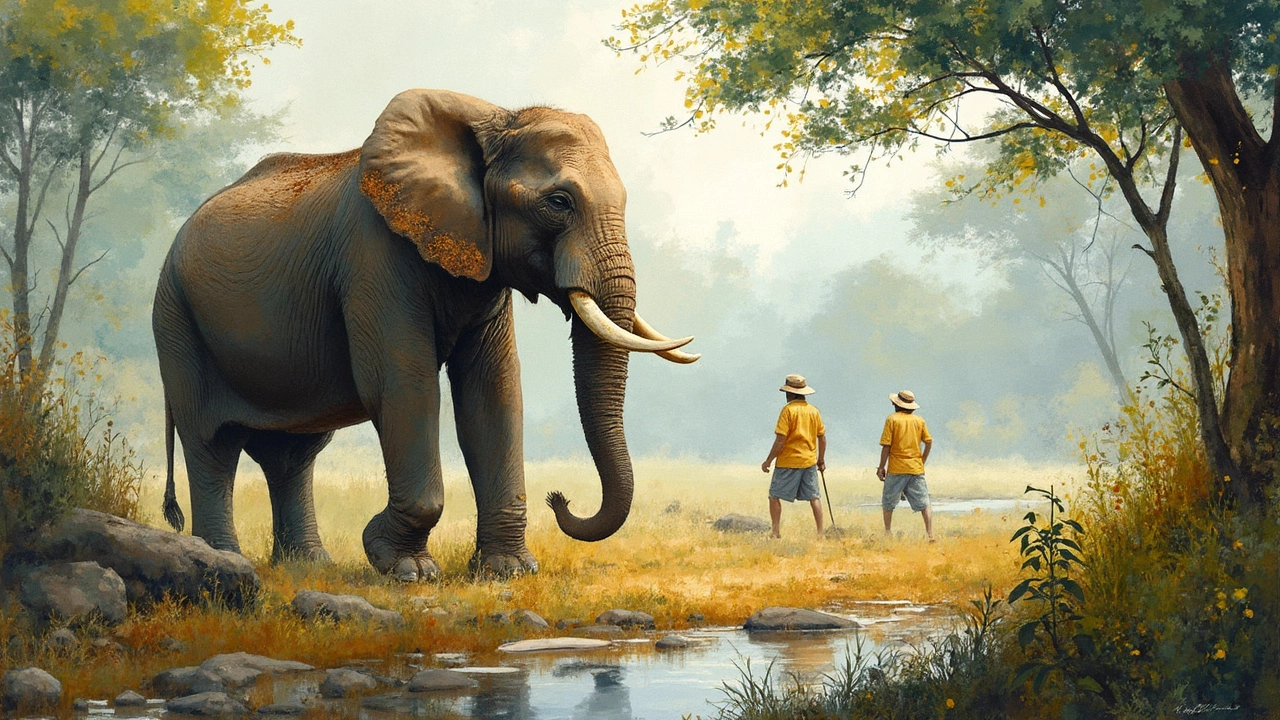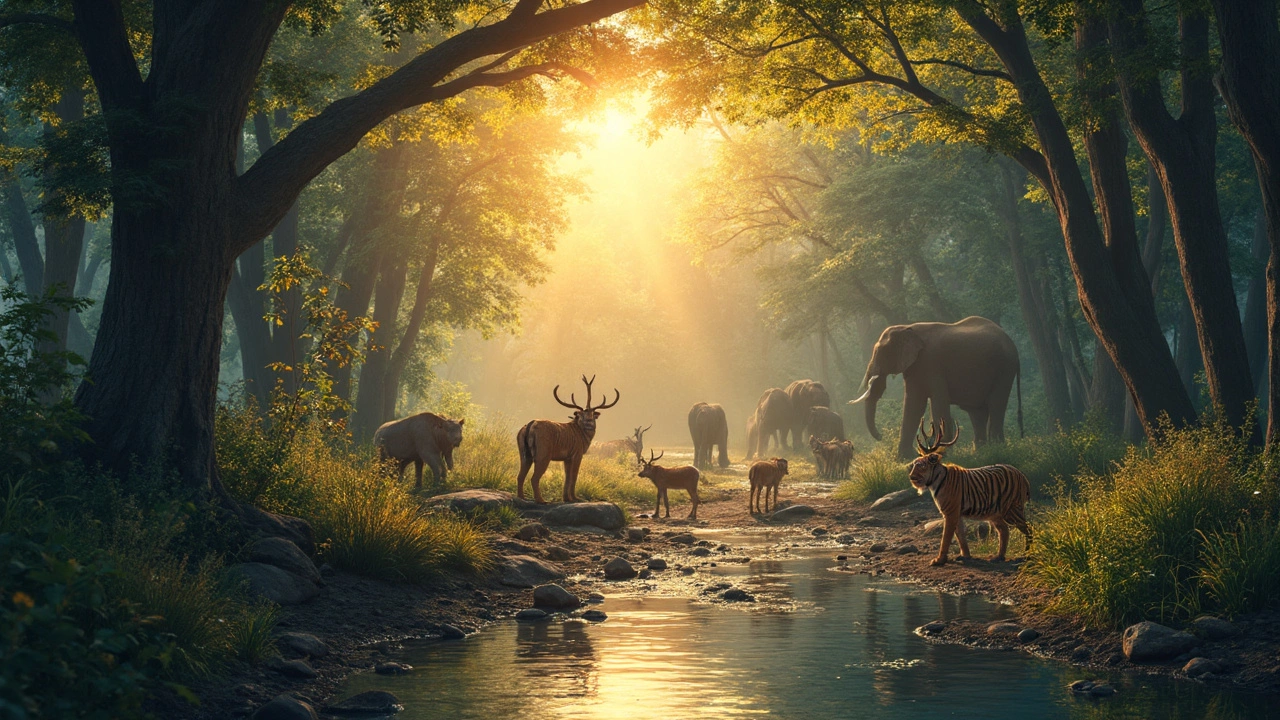Ever wandered into a wildlife sanctuary and thought, 'This must be paradise for animals, right?' Well, hang on. While sanctuaries do offer a shield against the perils of the wild—yeah, I'm talking poachers and habitat loss—they’re not always the picture-perfect paradise we imagine. These places can have their own set of hurdles.
Picture this: a wildlife sanctuary is like a bustling city. It’s got its crowd (animals), law enforcement (rangers), and unfortunately, some pesky problems (resource constraints). It’s not just about keeping threats out; it's about managing what’s within. Let’s dive into why these sanctuaries can be both a blessing and a curse for the animals calling them home.
- What Makes Sanctuaries a Safe Haven?
- Challenges Faced by Wildlife Sanctuaries
- Human Impact on Wildlife Sanctuaries
- Conservation Efforts and Their Importance
- Tips for Supporting Sanctuaries
What Makes Sanctuaries a Safe Haven?
Here's the deal: a wildlife sanctuary isn't just about fencing off a chunk of land and calling it a day. It's about creating an environment where animals can thrive, free from the pressing dangers they face elsewhere. But why do these places work so well for animal safety? Let's break it down.
First up, think about protection. Sanctuaries act like a buffer against poaching and habitat destruction. You know how illegal hunting is a huge problem? Well, in these protected areas, there's often strict surveillance and patrolling, thanks to dedicated rangers keeping an eagle eye on things. It’s like having a 24/7 security system for the critters.
Secondly, sanctuaries often maintain the natural landscape crucial for species to live and thrive. Whether it’s the lush forests home to a variety of species or wetlands that support migratory birds, preserving these natural environments is key. This means plants and animals can continue their life cycles undisturbed.
Another biggie is the role sanctuaries play in breeding programs for threatened species. Here, these programs don’t just help animals survive—they help them thrive. By monitoring and controlling breeding, sanctuaries ensure genetic diversity and healthier populations.
Lastly, let’s not forget research and education. Sanctuaries serve as fantastic places for scientists and conservationists to study animal behavior and ecology. The knowledge gained here helps develop better conservation strategies. Plus, these places can educate the public about why conservation matters, sparking that much-needed awareness and action.
In a nutshell, while no place on Earth can be entirely without danger, wildlife sanctuaries offer a semblance of safety and hope. They're a blend of protection, preservation, and proactive conservation efforts, making them indispensable in today’s world where wildlife faces constant threats.
Challenges Faced by Wildlife Sanctuaries
Let's face it, life in a wildlife sanctuary isn't all glitz and glamour for the creatures living there. Sure, these areas provide an escape from poaching, but they're also dealing with some heavy stuff. One of the biggies? Resource limitations. Think of it like trying to run a small town on a shoestring budget. Funding shortages can lead to fewer rangers on patrol, not enough food and water resources for animals, and delayed infrastructure repairs.
Then there's the issue of human-wildlife conflict. Imagine living next to an untouched wilderness. Sounds cool until those animals wander into your backyard! Proximity to human settlements means animals sometimes stray outside sanctuary boundaries, leading to conflicts with local communities. Farmers facing crop destruction aren’t too happy about it, and neither are the animals at risk from retaliatory actions.
Oh, and let's not forget climate change. Altered weather patterns can affect food sources and water availability inside these protected areas. From intense droughts to unexpected floods, sanctuaries can struggle to provide stable habitats. This variability can stress animal populations, impacting their reproduction rates and migration patterns.
Let's throw some numbers into the mix for perspective:
| Challenge | Impact |
|---|---|
| Funding Gaps | 60% of sanctuaries report budget shortfalls |
| Human-Wildlife Conflicts | 25 incidents per sanctuary annually |
| Climate Change Effects | Up to 15% habitat alteration in the last decade |
These challenges require smart management and clear strategies to keep sanctuaries as safe havens. It's a juggling act, balancing conservation goals with the realities of living next to wilderness.

Human Impact on Wildlife Sanctuaries
We love animals, and sure, heading to a sanctuary makes us feel like we’re doing our part, right? Humans have a pretty massive role in influencing what happens within these wildlife sanctuaries—and it's not always sunshine and rainbows.
Let's kick things off with the positive side. People have set up these conservation areas to protect animals from external threats and support their well-being. But that doesn’t mean our job is done once the fences go up. Maintenance and management need constant attention, and that involves a whole lot of human power.
But on the flip side, sometimes our presence brings problems. Ever heard about 'human-wildlife conflict'? It's basically when animals and locals end up bumping heads—sometimes literally. Elephants might break into farmlands looking for food, or predators could sneak into communities, creating tension between folks living nearby and sanctuary management.
There’s a fascinating stat that highlights this dynamic. According to a recent survey, around 15% of sanctuaries face significant issues with human encroachment and resource management annually. This can mean trouble for both humans and animals.
Think about tourism. It’s a double-edged sword. While it's great for funding, it also means more people are trekking through these areas, potentially trampling delicate ecosystems or stressing out resident wildlife. It's a balancing act: We want to appreciate nature without being a nuisance.
So, what can we do to keep the impact positive? Here are some ways:
- Support eco-friendly tourism initiatives. Choose tours that respect animals and their habitats.
- Get involved with local conservation efforts. Volunteer or donate to legitimate projects.
- Stay informed and spread awareness about how our actions affect these sanctuaries.
By understanding our influence, we can tip the scale to ensure these wildlife sanctuaries remain a safe and thriving place for all those amazing critters.
Conservation Efforts and Their Importance
So, why all the fuss about conservation efforts in wildlife sanctuaries? Well, these sanctuaries do a lot more than just keeping a fence between animals and threats. They're like nature’s last stand against extinction.
First off, these sanctuaries are on the frontline of protecting threatened species. Rangers and staff work tirelessly to monitor animal populations, sometimes even using drones for an eagle-eye view of the land. You’ll find teams tracking animal movements, ensuring they have enough resources and aren't venturing into dangerous territory. It's a well-coordinated effort that requires a lot of patience and dedication.
Think of the conservation strategies like a toolbelt full of solutions. They include breeding programs aimed at increasing numbers of endangered species. In some places, sanctuaries serve as a nursery for young animals until they’re ready to roam the wild independently.
But it’s not just about the animals. The entire ecosystem gets a boost. By maintaining the habitat, everything from plants to soil health sees benefits. Healthy ecosystems mean more biodiversity, which is kinda like having a massive life insurance policy for the earth.
And because we all love a good stat, here’s one for the books: According to a 2024 study, sanctuaries have increased the survival rate of some endangered animals by up to 20%. That’s huge!
But let’s not kid ourselves—running these operations isn’t cheap. That’s where public awareness and support come into play. Many sanctuaries rely on donations, eco-tourism, or government support for their funding. Luckily, more people are understanding just how vital these places are and lending a hand.
What can you do to help? Think about visiting a sanctuary and participating in their programs. Share their story. Donate if you can—or even volunteer. Every bit counts when you're trying to save the world, one sanctuary at a time.

Tips for Supporting Sanctuaries
Want to make a real difference for our animal pals in wildlife sanctuaries? You're in the right spot. Helping out doesn’t mean you have to pack your bags and head to the jungle. There are plenty of ways to lend a hand right from your couch.
- Donate Money: It might sound obvious, but funds are a sanctuary's lifeline. They help cover everything from food and vet care for animals to paying the staff who keep the place running smoothly. Even a small donation can make a big impact.
- Volunteer Time: If you live nearby, consider volunteering. Sanctuaries often need help with maintenance, feeding, and educational programs. It’s a great way to get some fresh air and maybe hang out with a giraffe or two.
- Adopt an Animal: Not literally, of course. Many sanctuaries offer symbolic adoption programs where you can sponsor an animal and receive updates about their life. It’s like having an international furry pen pal.
- Spread the Word: Use your social media power for good. Sharing info about the sanctuary and their efforts not only brings awareness but can also lead to more donations or volunteers.
- Buy Souvenirs: Next time you’re at a sanctuary gift shop, know that those knickknacks often fund maintenance and conservation projects. It’s like shopping with a purpose.
Feeling data-driven? Here's a quick stat for you—did you know that a significant chunk of funding for these sanctuaries (about 40%) actually comes from donations and public support? That's right! Your contribution, no matter how small, counts huge towards keeping these places going.
By getting involved, you're not just helping animals stay safe in their sanctuary homes; you're also supporting vital conservation efforts that benefit everyone in the ecosystem. So go on, make your mark!
